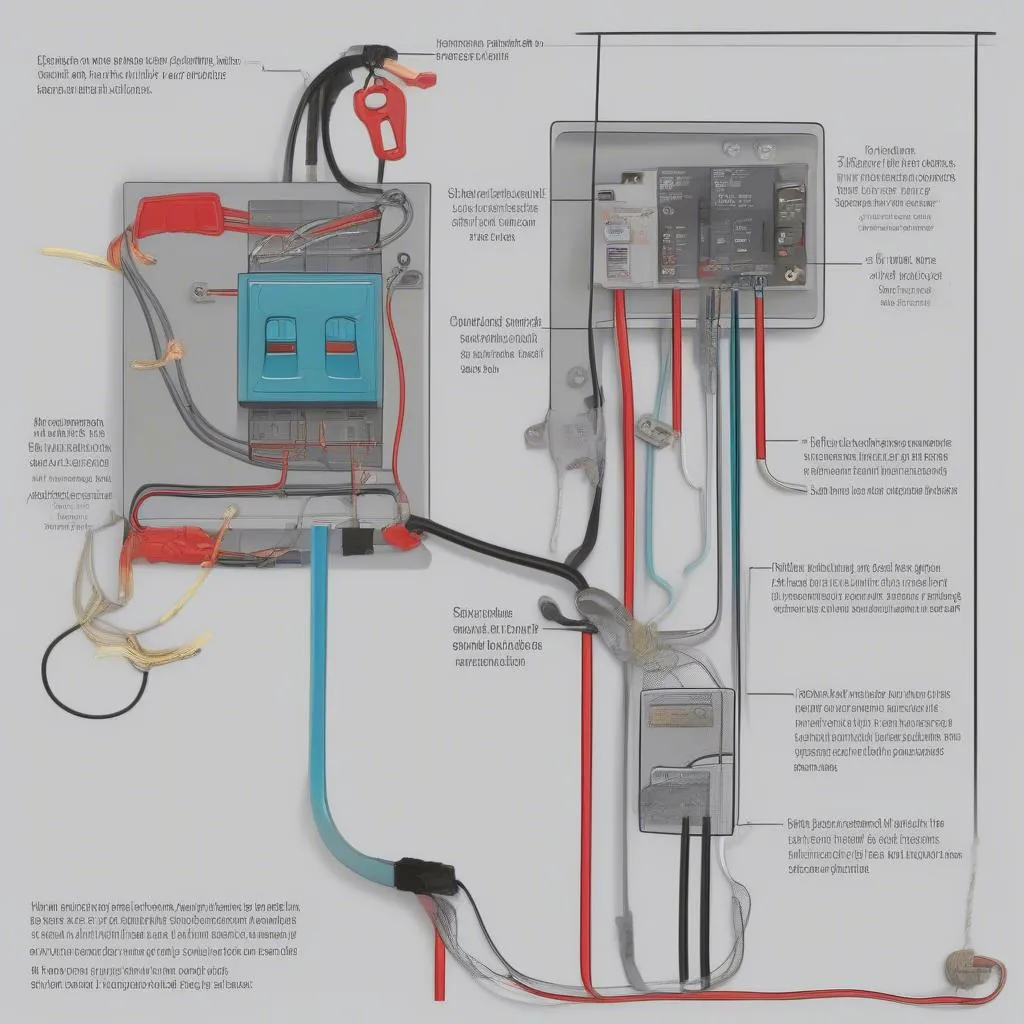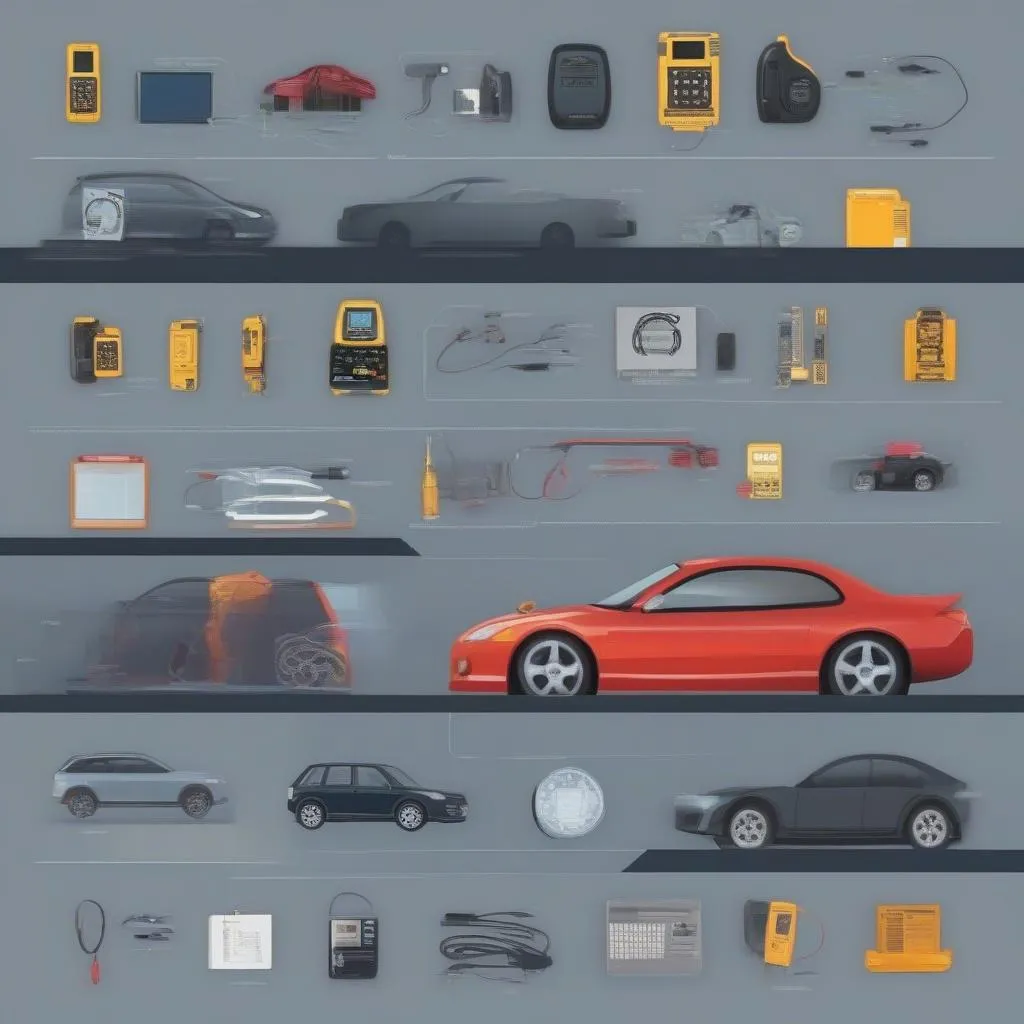Losing your car to theft can be a devastating experience. Luckily, there are ways to protect your vehicle and deter thieves, with one of the most effective being an anti-theft kill switch. While there are commercially available options, understanding how to wire your own anti-theft kill switch can give you a deeper understanding of your vehicle’s electrical system and offer a custom solution tailored to your needs.
What Does a Kill Switch Do?
Before we delve into the installation, let’s understand the purpose of a kill switch. In essence, it’s a simple yet effective device that interrupts the flow of electricity to vital components of your car, preventing the engine from starting. This interruption makes it significantly harder for thieves to make off with your vehicle.
Recognizing a Potential Target
Cars that are highly desirable or lack sophisticated anti-theft systems can be prime targets for thieves. Some signs your car might be vulnerable include:
- Older model: Vehicles manufactured before the widespread adoption of immobilizers and advanced anti-theft systems are easier to steal.
- Popular model: Cars that are in high demand are more attractive to thieves.
- Visible valuables: Leaving valuables in plain sight can tempt thieves.
Gathering Your Tools and Equipment
Installing a kill switch requires some basic electrical knowledge and a few tools:
- Wire strippers/cutters: For preparing the wires.
- Electrical tape: For insulating connections.
- Soldering iron and solder (optional): For more secure and permanent connections.
- Kill switch: A variety of switches are available, choose one that fits your needs and placement preference.
- Wire (14-16 gauge): Depending on the amperage of your chosen circuit.
Installation Steps
Important: Always disconnect your car’s battery before working on any electrical components.
- Choose Your Circuit: The most common circuits to interrupt are the ignition, fuel pump, or starter. Consult your car’s wiring diagram to identify the correct wires.
- Cut the Wire: Once you’ve identified the target wire, carefully cut it in a location that allows for easy access and concealment of the switch.
- Connect the Switch: Strip the insulation from the ends of the cut wire and connect them to the corresponding terminals on your kill switch, ensuring a secure connection.
- Secure and Insulate: Use electrical tape to insulate all exposed connections. Securely mount the switch in a discreet location known only to you.
- Testing: Reconnect your battery and test the kill switch to ensure it effectively disables the chosen circuit.
 Car Kill Switch Installation
Car Kill Switch Installation
FAQs About Anti-theft Systems
What is an Anti-theft Wire?
An anti-theft wire, often part of a larger system, carries signals related to your vehicle’s security. To learn more about identifying this wire, check out our article on What Does the Anti-theft Wire Look Like?.
What are the Different Types of Anti-theft Devices?
From basic steering wheel locks to sophisticated GPS trackers, there’s a wide range of options available. Explore the various Categories for Anti-theft Devices to find the best protection for your vehicle.
How Do I Install an Anti-theft System on My Bike?
Motorcycles are also vulnerable to theft. For comprehensive guidance on securing your bike, read our step-by-step guide on How to Install an Anti-theft System in a Bike.
Can I Install an Anti-theft System in My Older Vehicle?
Absolutely! You can enhance the security of older models like the 2008 Ford Crown Victoria. Learn more about Installing an Anti-theft System in a 2008 Ford Crown Vic with our detailed guide.
 Using Diagnostic Tools for Anti-theft Systems
Using Diagnostic Tools for Anti-theft Systems
Expert Insights
“A well-installed kill switch acts as a powerful deterrent against theft,” says automotive security expert, Dr. Emily Carter, author of “Automotive Security: A Comprehensive Guide.” “It adds an extra layer of protection that can save you from the hassle and heartache of vehicle theft.”
Need Help With Your Car’s Electrical System?
While installing a kill switch can be a DIY project, it’s essential to prioritize safety and accuracy. If you’re unsure about any aspect of the installation, it’s always best to consult a qualified automotive electrician. Remember, Cardiagtech offers a range of high-quality car diagnostic products that can help you troubleshoot and maintain your vehicle’s electrical system.
Contact CARDIAGTECH today for expert assistance with your car’s diagnostics and repairs.
